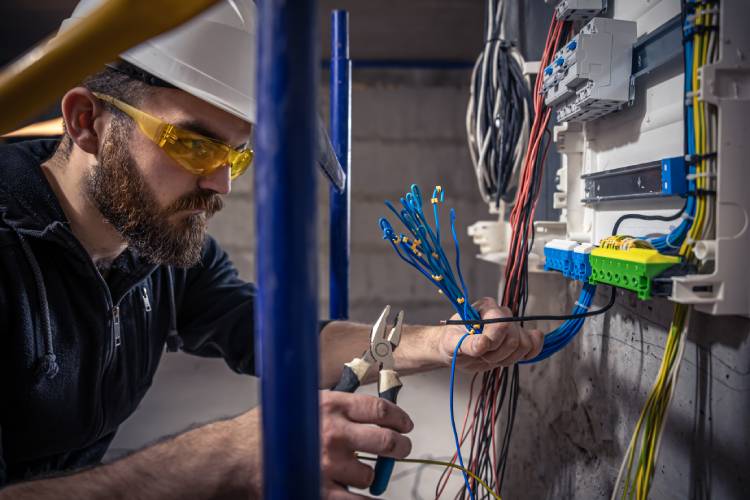Are you familiar with your home’s wiring and electrical setup basics? Seemingly small mistakes, such as a loose connection or incorrect gauge size, can cause significant problems if not appropriately addressed. In fact, improper wiring can lead to dangerous shocks, fire hazards, and unnecessary energy loss.
To help keep yourself safe from these risks and save money in the process, it’s essential to educate yourself on proper wiring practices. That’s why today we’re diving into everything you need to know about safe wiring practices—ensuring your electrical setup is up-to-code begins here!
Understand the basics of electricity and wiring
Electricity can seem intimidating, but once you understand the basics, it becomes much more accessible. One important concept to grasp is the idea of a circuit – essentially, the path along which an electric current flows.
Understanding how electricity flows through a circuit can give you a greater appreciation for the technology we take for granted daily, from the lights in your home to your smartphone charger. Of course, it’s essential to approach electrical work cautiously and follow safety guidelines. Learning to safely handle wiring and other electrical components is vital to keeping yourself and others safe.
Get to know your local building codes
If you’re a homeowner or business owner embarking on a new construction or renovation project, understanding your local building codes is crucial to the success of your project. Building codes dictate everything from the size and placement of plumbing fixtures to the type of materials you can use for your roofing.
Learning when permits are needed and why is key to staying within the law and avoiding costly fines. It’s also important to note that building codes vary from state to state, so there’s no one-size-fits-all all answer when it comes to permit requirements. Do your research and consult with your local building department to ensure that you’re in compliance with all rules and regulations.
Learn about the different types of wires, their sizes, and their purpose
Electricity is all around us, powering everything from the lights in our homes to the technology we use daily. But have you ever stopped to think about the different types of wires that make all of that possible?
Wires come in various sizes and types, each with their own unique purpose. Some cables are designed to carry high amounts of electricity over long distances, while others are used for more delicate applications such as electronic devices.
Understanding the different types of wires and their sizes can help you make informed decisions regarding your own electrical needs. So let’s look closer at the world of wires and discover what makes each one special.
Choose your power sources wisely
In today’s world, we rely heavily on technology to make our lives easier. From kitchen appliances to entertainment systems, we can’t function without them. But, have you ever wondered if you’re using the correct power source for your devices? Choosing the right power source can increase your appliances’ longevity and improve their performance.
When selecting a power source, it’s essential to identify which ones are compatible with your devices. While some may be compatible with AC and DC power, others may require a specific voltage or current. So, be sure to research and choose your power sources wisely to get the most out of your appliances.
Know how to properly install switches and outlets
If you are a Gaithersburg homeowner considering a heat pump installation, there are some critical factors to consider to ensure safety and efficient operation. A heat pump is a versatile device that can both heat and cool your home by moving heat from one location to another. However, the installation process can be complex and should ideally be handled by a professional.
Test the connections for the best results
A multimeter is an essential tool to have on hand when testing connections. Whether troubleshooting electrical problems or installing new equipment, a multimeter can help you identify and resolve issues quickly and efficiently.
By checking for proper connections with a multimeter, you can ensure that your equipment functions as it should and avoid costly damage or downtime. With its reliable accuracy and easy-to-read results, a multimeter is a must-have for any DIY enthusiast or professional technician.
With the basics of electricity now in the bag, it’s time to take up the task of rewiring your home! Of course, safety is paramount, so be sure to study local building codes to ensure that you’re following the correct procedures. When it comes to selecting the proper wires and power sources, remember they all serve a different purpose – choose wisely based on what works best for your appliance. Installing switches and outlets may seem intimidating initially, but with some practice and patience, you’ll soon have the process down pat.

Comments are closed.